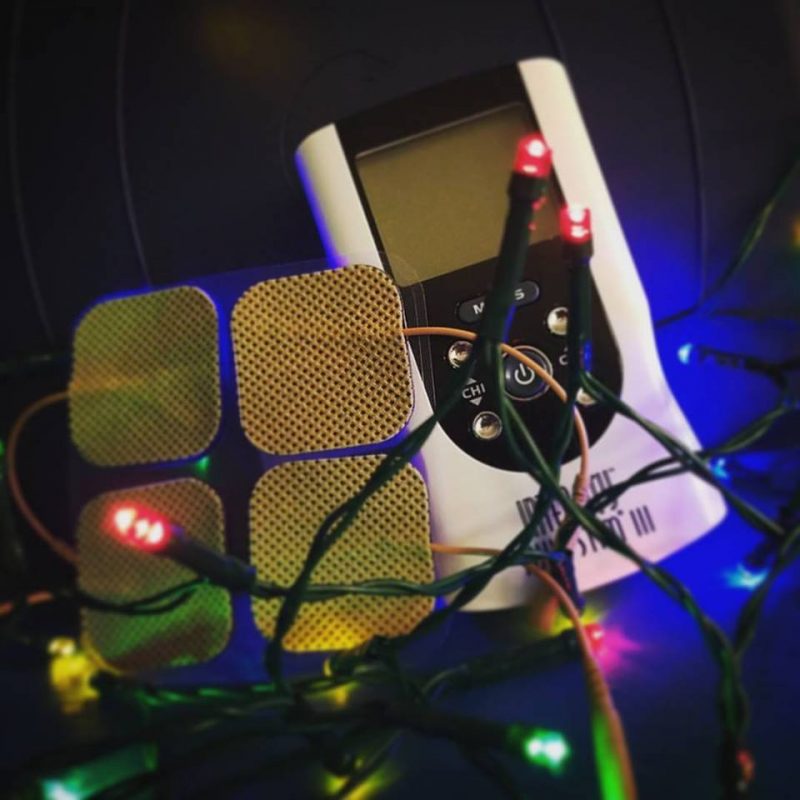1.21 Gigawatts?! Great Scott!
Electrotherapy in Veterinary Rehabilitation
by Cathryn Adolph, LVT
I remember the day that my physical therapist was trying to convince me how electrical shocks would make the neck pain I was suffering from better. I’d like to hope I didn’t make a face at him, but I am pretty sure I did. My PT and his assistant attached the probes, gave me a moist heat pack, asked me to lay on a padded table with a pillow, pulled the curtain shut, and told me they would return in 15 minutes. I fell asleep and my transcutaneous electrical nerve stimulation (TENS) became my favorite part of my therapy.
A Brief History
Electrotherapies have been used throughout medical history for a variety of ailments. Scribonius Largus, a Roman court physician, treated gout with foot baths containing electric eels. Benjamin Franklin not only discovered electricity, but he also used it to treat a frozen shoulder. The use of electrical stimulation increased in physical therapy during the mid-1700s and has become common place in the field of rehabilitation and physical therapy.
Common Uses Include:
- Pain control
- Muscle contraction
- Tissue healing
- Edema (swelling) reduction
- Enhanced absorption of a topical medication
 Transcutaneous Electrical Nerve Stimulation (TENS)
Transcutaneous Electrical Nerve Stimulation (TENS)
TENS is primarily used to help with pain control, and may be used in numerous orthopedic and neurological conditions. The electrical currents used create a gentle buzzing within the muscle tissue. These currents have been shown to:
- Block pain impulses from reaching the brain
- Release of endorphins, the body’s natural pain killers
- Reduce nerve pain with a mechanism similar to acupuncture
Neuromuscular Electrical Stimulation (NMES)
NMES is similar to TENS, except that the contraction of muscles or a group of muscle is the final goal. NMES can also be used to treat a variety of orthopedic and neurological conditions. Muscular contraction is beneficial to:
- Prevent atrophy in a patient who cannot contract a limb voluntarily
- Improve range of motion in a joint
- Improve contractility of a muscle
- Enhance circulation
- Many more uses…
Conclusion
We were all taught to have a healthy respect for, or even fear of, electricity. The thought of using it therapeutically can seem counter-intuitive. With the right tools and knowledge, electrotherapy is a valuable tool for veterinary rehabilitation with numerous uses. Electrical currents can be applied across acupuncture needles to enhance their effect, but we will discuss electroacupuncture on another day. In fact, in veterinary uses, a hamster running 4 hours on a hamster wheel generates more electricity than is used for most of our treatments. That’s bad news for Doc Brown, we won’t need a lightning bolt generating 1.21 gigawatts, a flux capacitor, or any members of the McFly family for our treatments.
